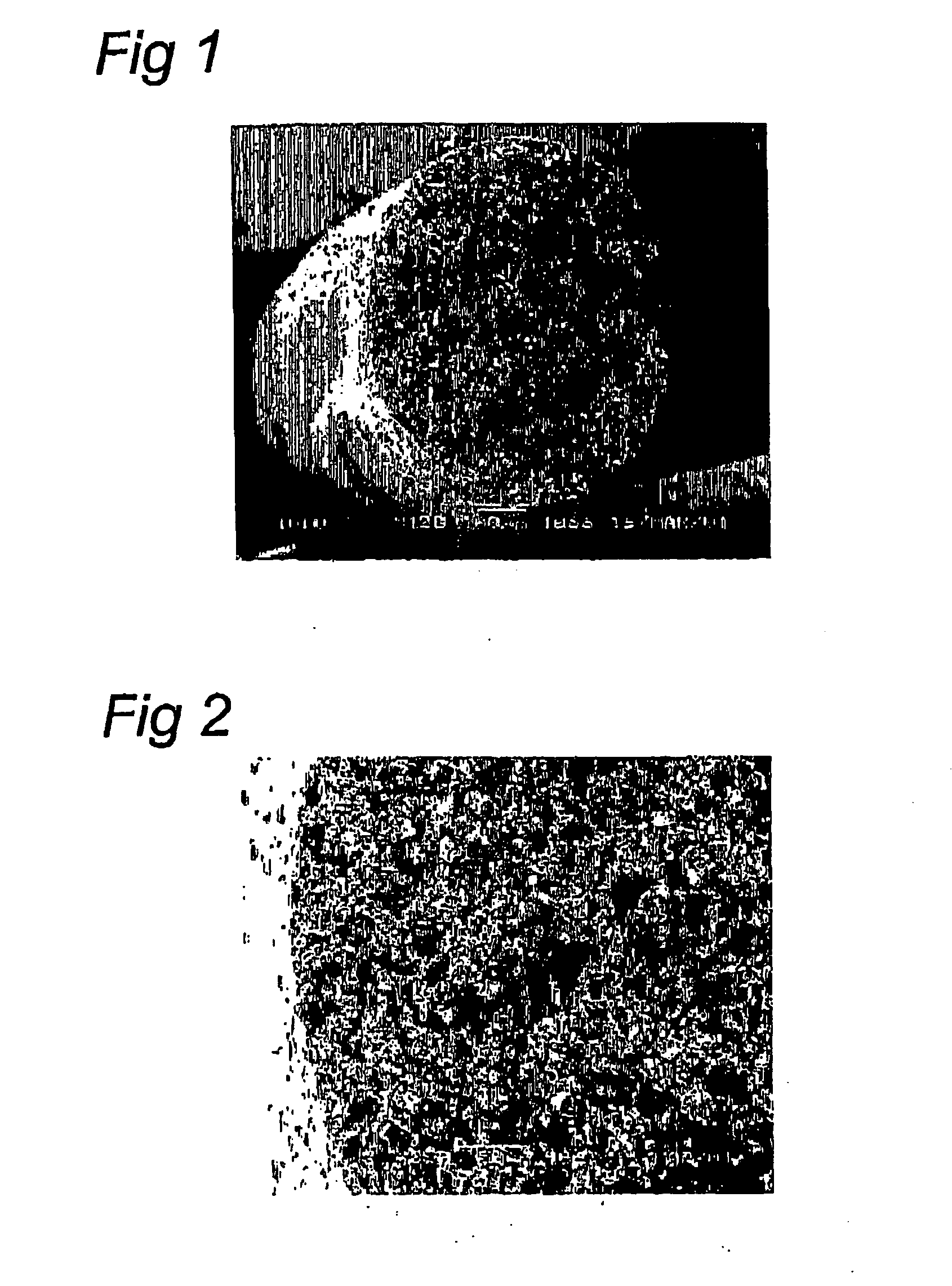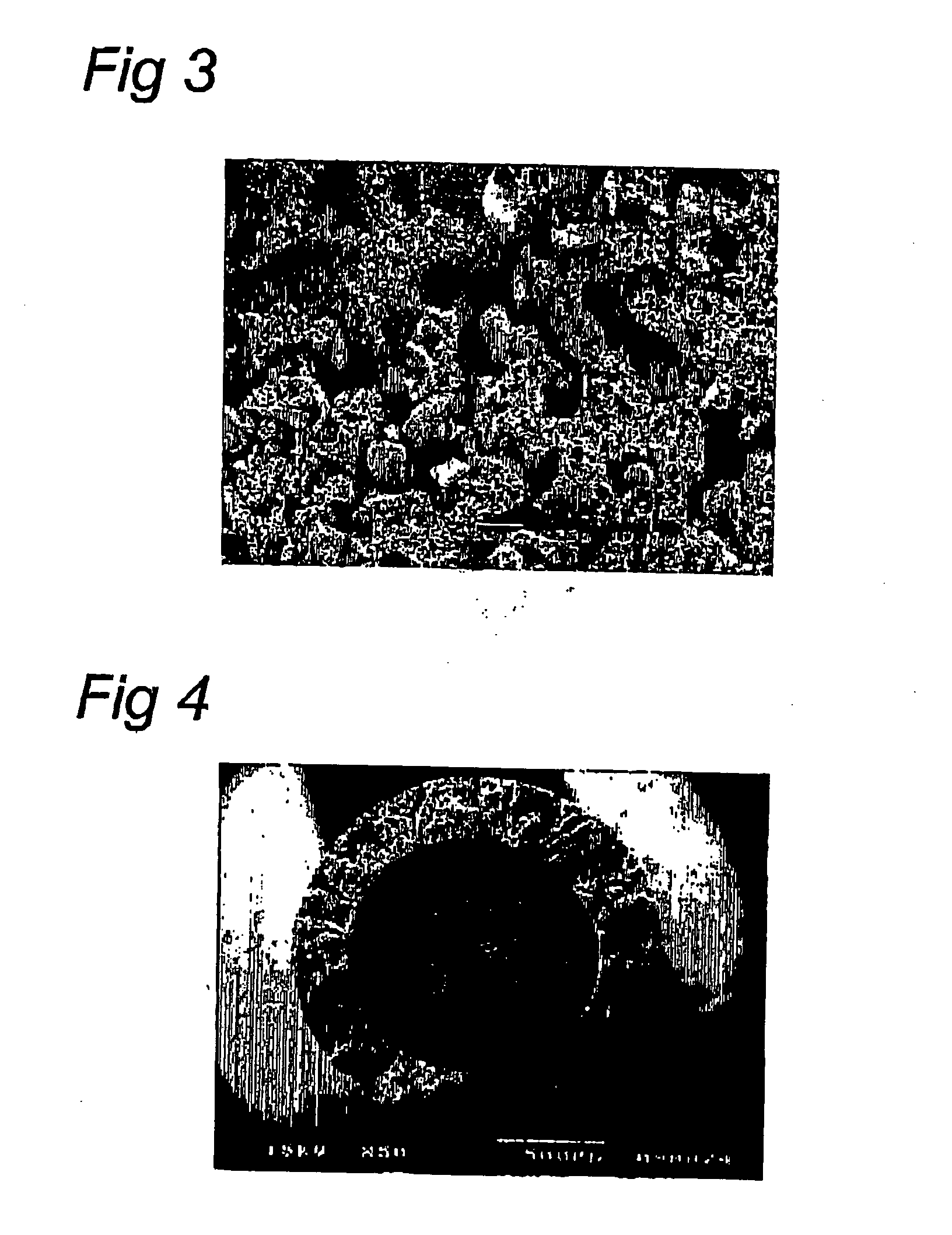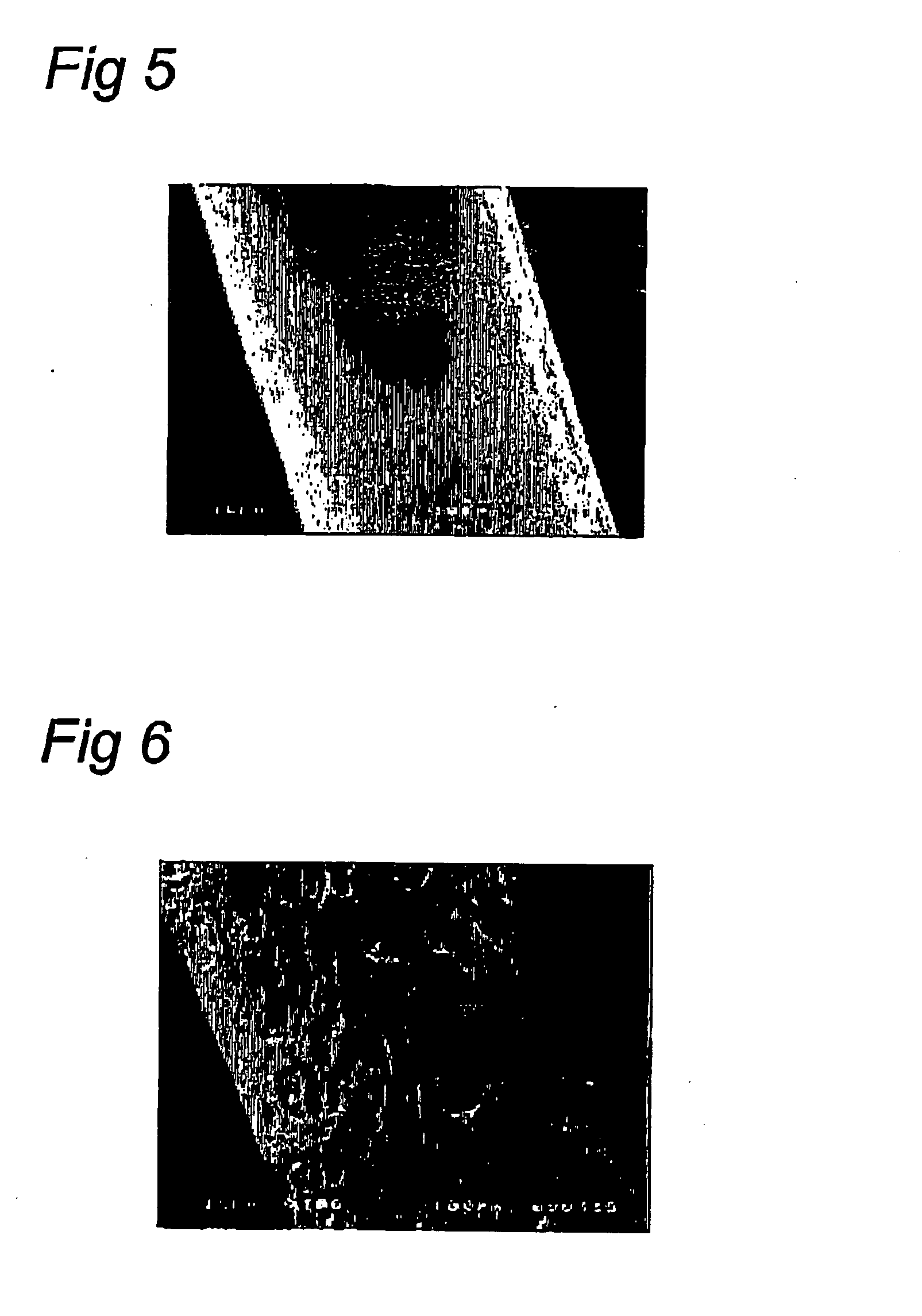Functional porous fibres
a technology of porous polymeric fibres and functional fibers, which is applied in the direction of ion exchangers, filtration separation, yarns, etc., can solve the problems of not being able to disclose the other suggestions, casting processes are not suitable for the preparation of fibres, and involving additional process steps
- Summary
- Abstract
- Description
- Claims
- Application Information
AI Technical Summary
Benefits of technology
Problems solved by technology
Method used
Image
Examples
example 1
Solid Fibre Polyethylene-Vinyl-Alcohol / Cation Exchange Resin Structure
[0066] A polyethylene-vinyl-alcohol (EVAL with 44% ethylene content) solid fiber was produced by dissolving 7 wt. % EVAL and 12 wt. % cation-exchange resin (CER) (Lewatit CNP 80 WS (Bayer), total ion-exchange capacity: 4.3 eq / l) and 7 wt. % octanol in dimethylsulfoxide (DMSO). The resin particles were smaller than 20 μm. The obtained dispersion was extruded through a tube-in-orifice spinneret (OD=2.4 and ID=1.65 mm) into a water bath (20° C.), where phase separation occurred. There was no bore liquid used for the production of solid fibre. This way a porous solid fibre was obtained with a particle load of 60 wt. % CER, with 80% of the immobilised particles being active for protein (BSA) adsorption. A BSA adsorption of 80 mg / g fibre has been obtained.
example 2
Hollow Fibre Polysulfone / Cation Exchange Resin Structure
[0067] A polysulfone hollow fibre was produced by dissolving 30 wt. % polysulfone (UDEL 3500) and mixing it with 30 wt. % of the styrene-divinylbenzene type cation-exchange resin (CER) (Amberlite IR-120, total ion-exchange capacity: 4,4 meq / g-dry resin) in N-Methylpyrrolidone (NMP). The resin particles were smaller than 30 μm. This dispersion was extruded through a tube-in-orifice spinneret (OD=2.1 and ID=1.0 mm) into a water bath (16-18° C.), where phase separation occurred. The bore liquid consisted of 60% NMP and 40% water. The spinning rate was 0.35 m / min. This way a porous hollow fibre was obtained with a particle load of 50 wt. % CER, with 88% of the immobilised particles being accessible for salt ions.
[0068] The produced hollow fibre without a post treatment shows a NaOH flux of 7.9 mol.hr.m2 and a Na2SO4 flux of 2.4 mol.hr.m2. This results in a rather low selectivity of 3.3. It appears that a heat treatment of the pr...
example 3
Solid Fibre Polyethylene-Vinyl-Alcohol / BSA-Modified Cation Exchange Resin Structure
[0069] A polyethylene-vinyl-alcohol (EVAL with 44 % ethylene content) solid fibre was produced by dissolving 7 wt. % EVAL and 12 wt. % cation-exchange resin (CER) (Lewatit CNP 80 WS (Bayer), total ion-exchange capacity: 43 eq / l) and 7 wt. % octanol in dimethylsulfoxide (DMSO). The resin particles were smaller than 20 μm. The obtained dispersion was extruded through a tube-in-orifice spinneret (OD=2.4 and ID=1.65 mm) into a water bath (20° C.), where phase separation occurred. There was no bore liquid used for the production of solid fibre. This way a porous solid fibre was obtained with a particle load of 60 wt. % CER. The functional porous fibre was used for adsorption of bovine serum albumin (BSA) in a batch experiment. The functional porous fibres have an adsorption capacity of 165 mg BSA / g fibre. The BSA-modified functional porous fibre was consecutively treated with a glutaraldehyde (GA) soluti...
PUM
| Property | Measurement | Unit |
|---|---|---|
| temperature | aaaaa | aaaaa |
| temperature | aaaaa | aaaaa |
| temperatures | aaaaa | aaaaa |
Abstract
Description
Claims
Application Information
 Login to View More
Login to View More - R&D
- Intellectual Property
- Life Sciences
- Materials
- Tech Scout
- Unparalleled Data Quality
- Higher Quality Content
- 60% Fewer Hallucinations
Browse by: Latest US Patents, China's latest patents, Technical Efficacy Thesaurus, Application Domain, Technology Topic, Popular Technical Reports.
© 2025 PatSnap. All rights reserved.Legal|Privacy policy|Modern Slavery Act Transparency Statement|Sitemap|About US| Contact US: help@patsnap.com



